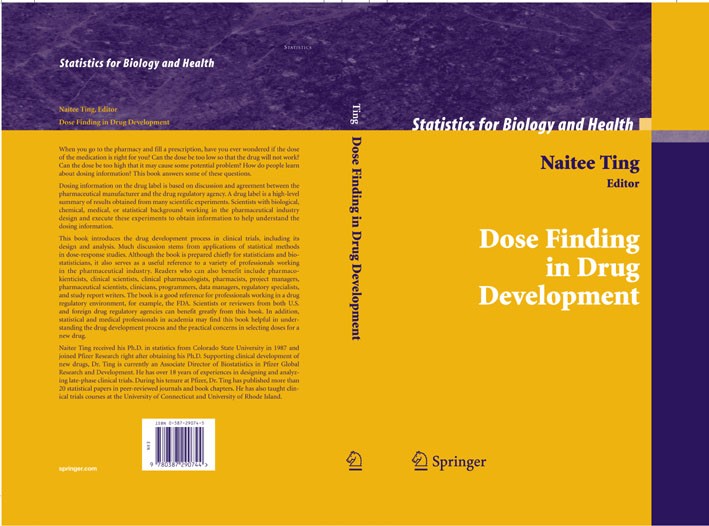| 書目名稱 | Dose Finding in Drug Development |
| 編輯 | Naitee Ting |
| 視頻video | http://file.papertrans.cn/283/282677/282677.mp4 |
| 概述 | Introduces the drug development process, the design and analysis of clinical trials.Presents statistical applications in the design and analysis of dose response studies.Examines important procedural |
| 叢書名稱 | Statistics for Biology and Health |
| 圖書封面 |  |
| 描述 | This book emphasizes dose selection issues from a statistical point of view. It presentsstatisticalapplicationsinthedesignandanalysisofdose–responsestudies. The importance of this subject can be found from the International Conference on Harmonization (ICH) E4 Guidance document. Establishing the dose–response relationship is one of the most important act- ities in developing a new drug. A clinical development program for a new drug can be broadly divided into four phases – namely Phases I, II, III, and IV. Phase I clinical trials are designed to study the clinical pharmacology. Information - tained from these studies will help in designing Phase II studies. Dose–response relationshipsareusuallystudiedinPhaseII.PhaseIIIclinicaltrialsarelarge-scale, long-term studies. These studies serve to con?rm ?ndings from Phases I and II. ResultsobtainedfromPhasesI,II,andIIIclinicaltrialswouldthenbedocumented and submitted to regulatory agencies for drug approval. In the United States, - viewers from Food and Drug Administration (FDA) review these documents and make a decision to approve or to reject this New Drug Application (NDA). If the new drug is approved, then Phase IV studies can be start |
| 出版日期 | Book 2006 |
| 關(guān)鍵詞 | Maxima; Radiologieinformationssystem; clinical trial; computerassistierte Detektion; development; drug; dr |
| 版次 | 1 |
| doi | https://doi.org/10.1007/0-387-33706-7 |
| isbn_softcover | 978-1-4419-2115-4 |
| isbn_ebook | 978-0-387-33706-7Series ISSN 1431-8776 Series E-ISSN 2197-5671 |
| issn_series | 1431-8776 |
| copyright | Springer-Verlag New York 2006 |
 |Archiver|手機(jī)版|小黑屋|
派博傳思國際
( 京公網(wǎng)安備110108008328)
GMT+8, 2025-10-25 23:49
|Archiver|手機(jī)版|小黑屋|
派博傳思國際
( 京公網(wǎng)安備110108008328)
GMT+8, 2025-10-25 23:49


